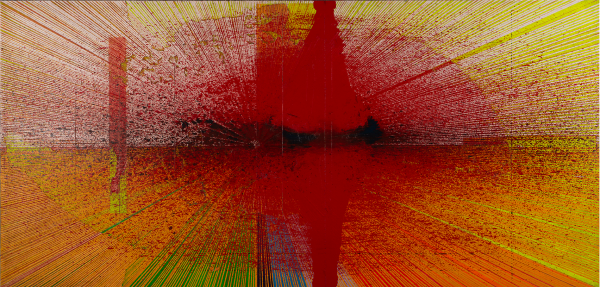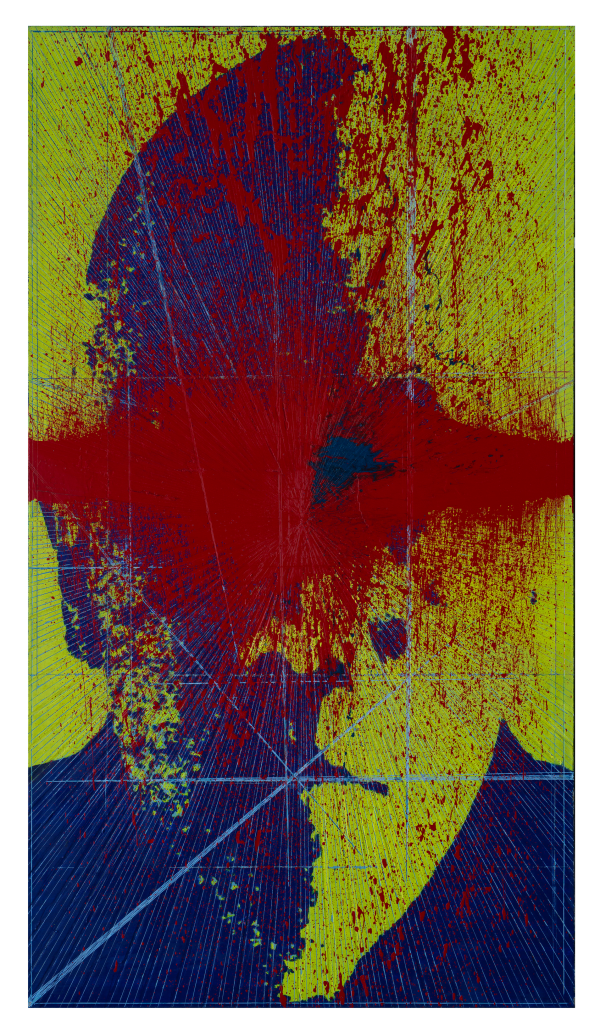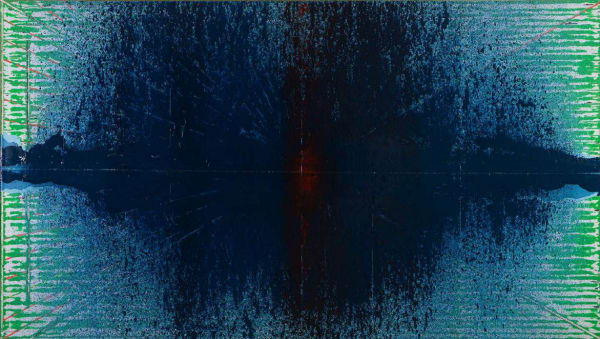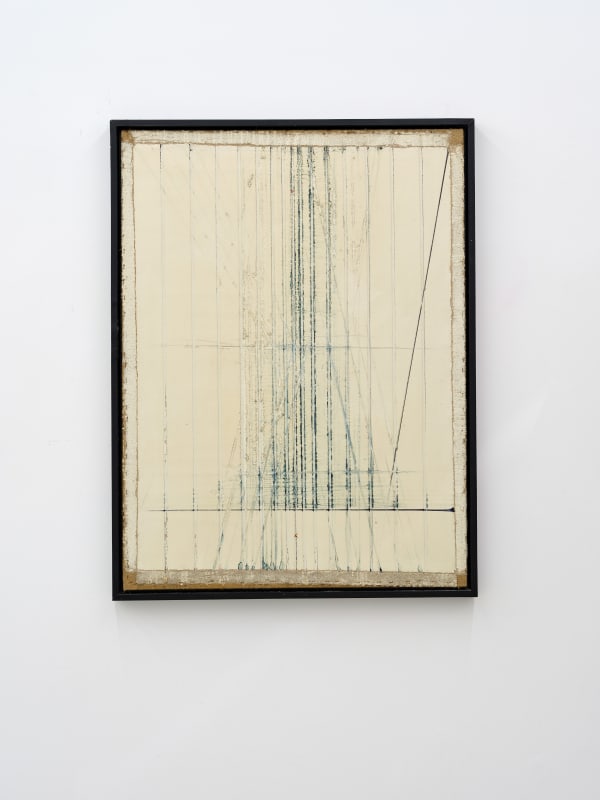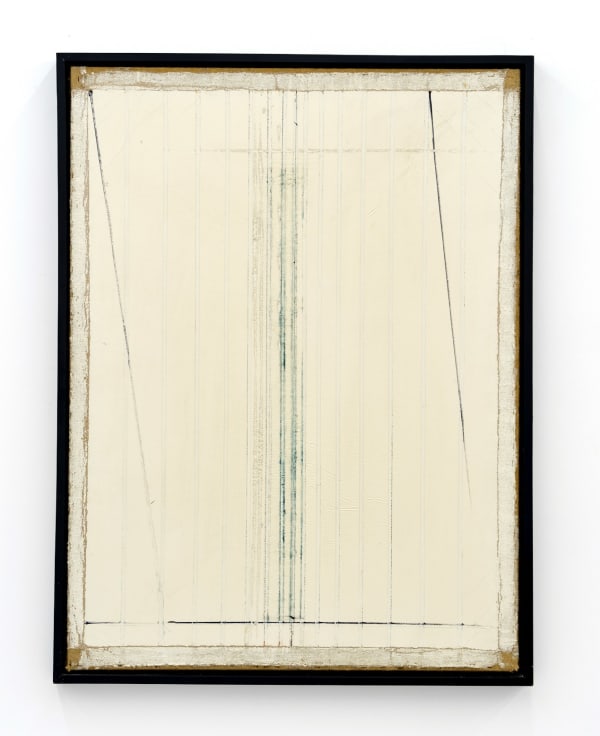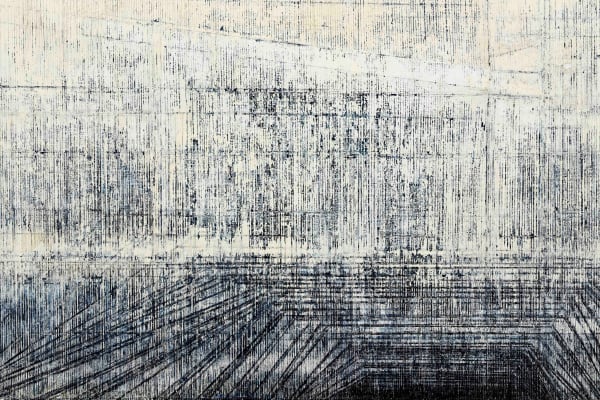Tang Song Works
Past exhibition
Overview
Some argue that all art is rooted in the conditions that produce it; consequently, abstract art may have more facility for harboring social relevance and personal psychology than previously believed. Abstract expressionism was an art of war, emerging during the 1940s when the world was thrashed to shards. Simultaneously anti-Fascist, apolitical, and purist - early abstract expressionism is sometimes attributed to the chaos of a world that now had the ability to decimate itself many times over. The paintings that you see here before you have come a long way and though the war is a private one, rooted in conditions that have sheltered the author's stormy life, it still rages on over the surface of these formidable canvases.
Tang Song is a Chinese avant-garde legend who has spent the better part of his adult life abroad. These works, produced over the last 14 years, form a record of the artist's return to China, his country of birth and where his artistic career began. While the works can be described as abstract expressionist in spirit and form, they also embody the complexity, intensity and breadth that this artist's homecoming has engendered. Tang returned to China in 2007 and began working fervently and nomadically, keeping studios in Beijing, Hangzhou and Shanghai, but seldomly exhibiting. A homecoming is not always a celebratory occasion, with expectations and images, no longer holding affection or relevance, and where forgotten ghosts continued to rear their heads. His return was not so much a reunification with a lost land and people but a catalyst for inward exploration. Yet as one strives to transcend the conundrum of time and space it is precisely time and space that has given rise to this powerful body of work. The compound, scarred layers upon each canvas marks a history that seems to simultaneously reach towards the inner self of Atman and outward to our universal, unknown eternity.
Tang was educated and came of age in a mix of economic-reform jubilation and Chinese traditionalism. He attended what is now China Academy of Art and exercised his skills in the department of Ink Painting at a time of fervent experimentation. He remembers that at the time "There was no such thing as contemporary" and no words could adequately describe what was happening. "Where does the new start? To start from the material change, just as that a person wanting to reborn must start from changing their blood, flesh, and heart." While his early works were a far departure from the prescribed ink and xuan paper- tending more towards multi-media installation or performance, he has since returned to the flat surface. Tang's surfaces are worked forcefully with dense coats of paint, sometimes applied with mops, over a grid or patterns of strings that are removed, realigned, covered and then hurriedly uncovered again. Sometimes a power saw is employed to slice layers away and reveal the painting's self-referent archeology - years of labor, anguish, indecision, disgust, jubilation, transcendence. An overriding architectural composition emerges from many of the works, evoking a galactic space, a forced perspective, a prison matrix. The sheer thickness and scale of the paintings reveal the energy and sheer physical endurance necessary to execute them. It is no easy task, one that seems capable of exhausting one's vital essence, yet with each canvas there are no signs of retreat. Even for the artist, it is hard to decipher just how long any given painting has taken. Days, months, sometimes years in the making, some that appear to never have an end in sight. They are presented like mere occasions in a long history of turmoil rather than finished works of art.
Threaded into his endeavors is Tang's early exposure to Rauschenberg during the famous American artist's trip to Beijing in 1985. Rauschenberg warned the young Chinese art student not to "always think about what to do in New York, or what to do in Paris, but to build something new that belongs to China, in their own country." We can argue that while Tang's paintings share a universal language of expressionism and could be as pertinent in Germany or New York as they are in Shanghai, they are born from a soul that is uniquely Chinese, firmly set on thousands of years of civilization, and by hands of an industrial strength. Also set within these monstrous works lie the subtle principles of traditional Chinese Painting: Spirit Resonance (qiyun) vitality (shengdong ), energy transmitted from the artist into the work; "Division and Planning" (jingying ) with his architectural structures and even "Bone Method" (gufa ) or his brush work can all be used to access the inner workings of these symphonic paintings. The lessons from Rauschenberg to the young Tang Song still reverberate: "Don't eat other people's leftovers. Creativity can't be found in those things. It should be about prescience and potentiality. If you want to construct a new beauty, you have to build it in this way." It was only after many years of living abroad that Tang Song in the end became re-united with himself.
Tang Song is a Chinese avant-garde legend who has spent the better part of his adult life abroad. These works, produced over the last 14 years, form a record of the artist's return to China, his country of birth and where his artistic career began. While the works can be described as abstract expressionist in spirit and form, they also embody the complexity, intensity and breadth that this artist's homecoming has engendered. Tang returned to China in 2007 and began working fervently and nomadically, keeping studios in Beijing, Hangzhou and Shanghai, but seldomly exhibiting. A homecoming is not always a celebratory occasion, with expectations and images, no longer holding affection or relevance, and where forgotten ghosts continued to rear their heads. His return was not so much a reunification with a lost land and people but a catalyst for inward exploration. Yet as one strives to transcend the conundrum of time and space it is precisely time and space that has given rise to this powerful body of work. The compound, scarred layers upon each canvas marks a history that seems to simultaneously reach towards the inner self of Atman and outward to our universal, unknown eternity.
Tang was educated and came of age in a mix of economic-reform jubilation and Chinese traditionalism. He attended what is now China Academy of Art and exercised his skills in the department of Ink Painting at a time of fervent experimentation. He remembers that at the time "There was no such thing as contemporary" and no words could adequately describe what was happening. "Where does the new start? To start from the material change, just as that a person wanting to reborn must start from changing their blood, flesh, and heart." While his early works were a far departure from the prescribed ink and xuan paper- tending more towards multi-media installation or performance, he has since returned to the flat surface. Tang's surfaces are worked forcefully with dense coats of paint, sometimes applied with mops, over a grid or patterns of strings that are removed, realigned, covered and then hurriedly uncovered again. Sometimes a power saw is employed to slice layers away and reveal the painting's self-referent archeology - years of labor, anguish, indecision, disgust, jubilation, transcendence. An overriding architectural composition emerges from many of the works, evoking a galactic space, a forced perspective, a prison matrix. The sheer thickness and scale of the paintings reveal the energy and sheer physical endurance necessary to execute them. It is no easy task, one that seems capable of exhausting one's vital essence, yet with each canvas there are no signs of retreat. Even for the artist, it is hard to decipher just how long any given painting has taken. Days, months, sometimes years in the making, some that appear to never have an end in sight. They are presented like mere occasions in a long history of turmoil rather than finished works of art.
Threaded into his endeavors is Tang's early exposure to Rauschenberg during the famous American artist's trip to Beijing in 1985. Rauschenberg warned the young Chinese art student not to "always think about what to do in New York, or what to do in Paris, but to build something new that belongs to China, in their own country." We can argue that while Tang's paintings share a universal language of expressionism and could be as pertinent in Germany or New York as they are in Shanghai, they are born from a soul that is uniquely Chinese, firmly set on thousands of years of civilization, and by hands of an industrial strength. Also set within these monstrous works lie the subtle principles of traditional Chinese Painting: Spirit Resonance (qiyun) vitality (shengdong ), energy transmitted from the artist into the work; "Division and Planning" (jingying ) with his architectural structures and even "Bone Method" (gufa ) or his brush work can all be used to access the inner workings of these symphonic paintings. The lessons from Rauschenberg to the young Tang Song still reverberate: "Don't eat other people's leftovers. Creativity can't be found in those things. It should be about prescience and potentiality. If you want to construct a new beauty, you have to build it in this way." It was only after many years of living abroad that Tang Song in the end became re-united with himself.
Installation Views
Video
Works




